On the Road is a weekday feature spotlighting reader photo submissions.
From the exotic to the familiar, whether you’re traveling or in your own backyard, we would love to see the world through your eyes.
Good morning everyone,
Once again, we’re blessed with another amazing submission. Don’t forget folks, submit submit submit! We’re getting low on submissions in the queue!
Have a great weekend, we’ll see you Monday.
I recently visited my brother and sister-in-law, who live in North Carolina, and we all took a trip down to St. Augustine (stopping in Savannah GA along the way), and then to Little St. Simons Island, a Nature Conservancy property and eco-resort just off the coast of southeast Georgia (https://www.littlestsimonsisland.com). Here are some photos from that expedition; I may follow this up with some more photos if they turn out OK.
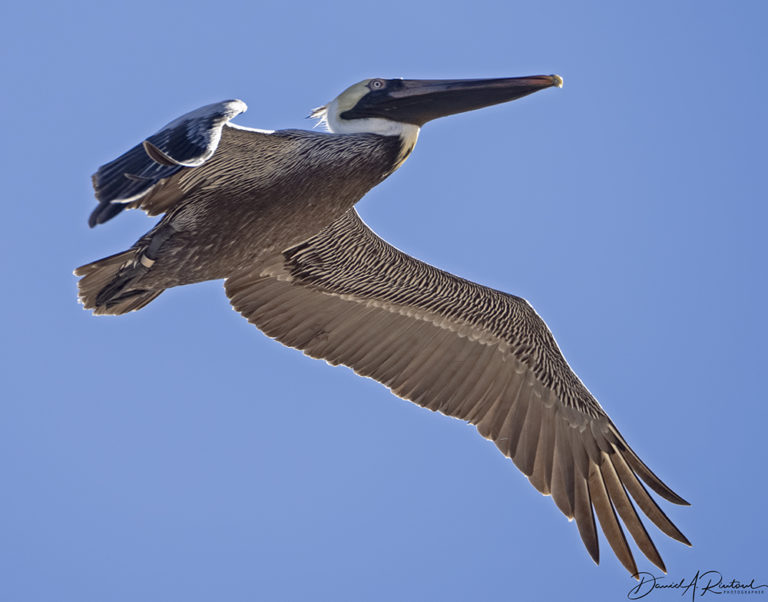
Adult Brown Pelican, with some additional bling, a leg band. Dunno who bands pelicans on this coast, but I’m betting it is a hot and smelly enterprise.
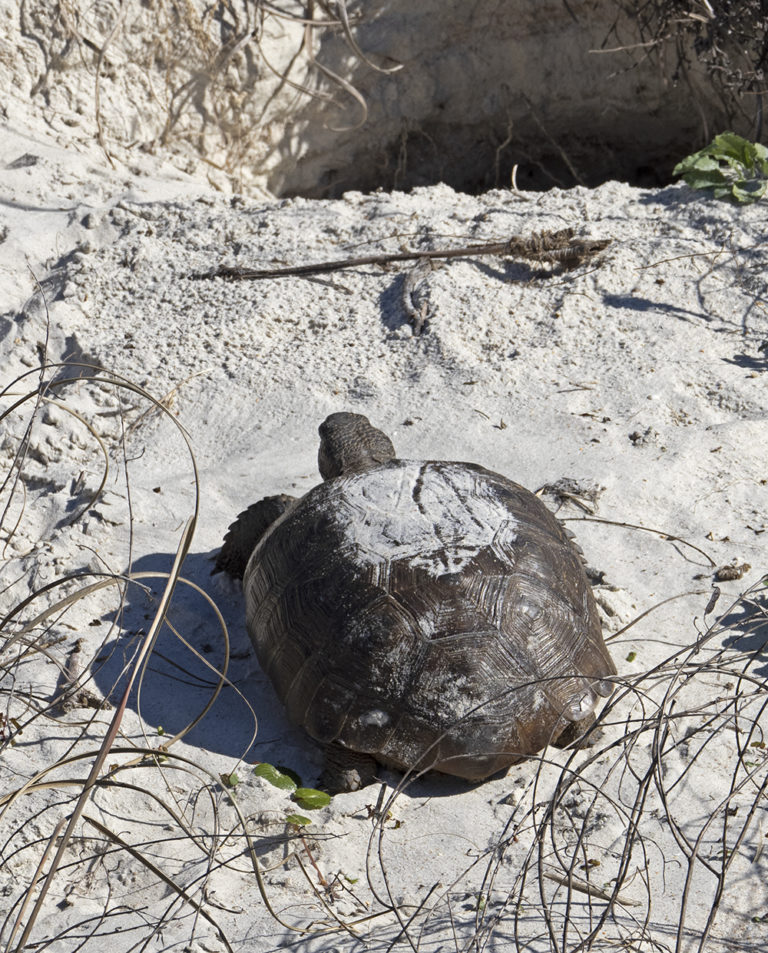
Florida Gopher Tortoise, an endangered species, entering its burrow on the back side of some coastal dunes.
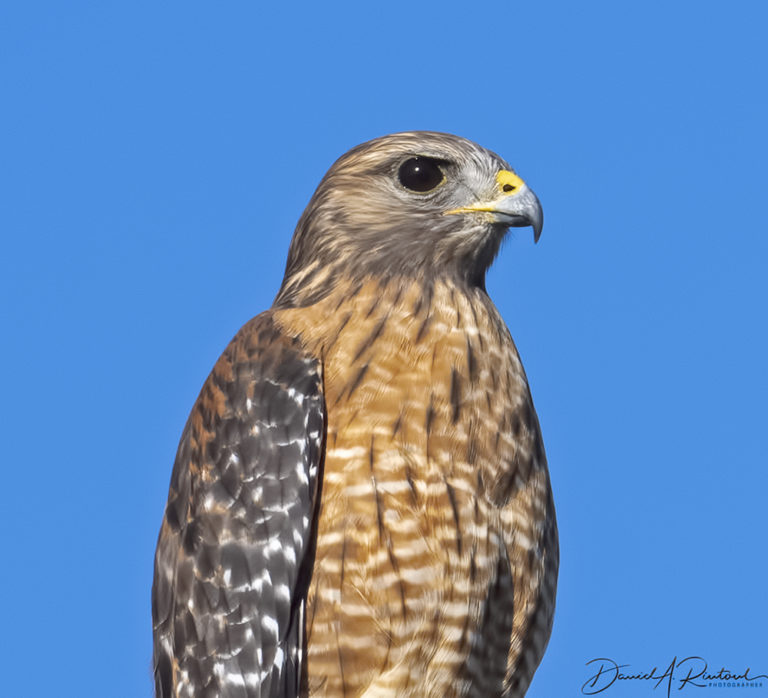
Adult Red-shouldered Hawk. These seem to be calm and tame birds in general, but this one was well beyond that, allowing a very close approach. It may still be on that same wire, for all I know.
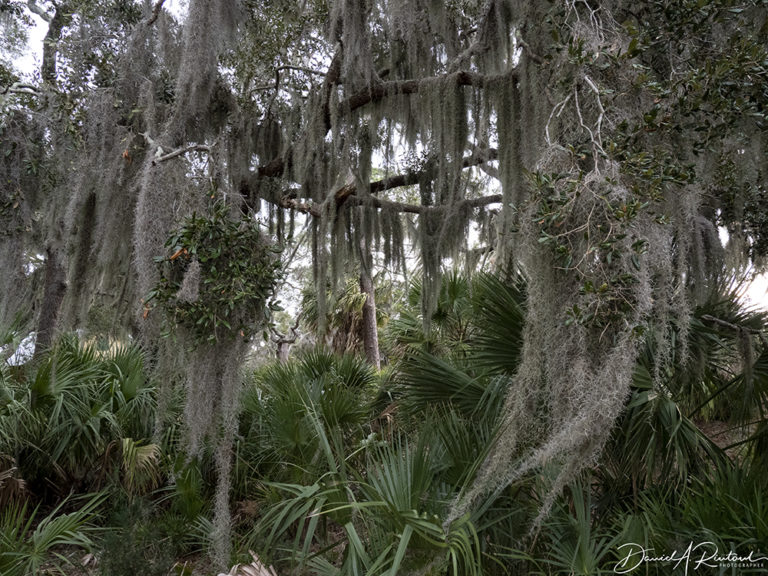
The live oaks on this island have some of the most amazing collections of Spanish Moss that I have ever seen
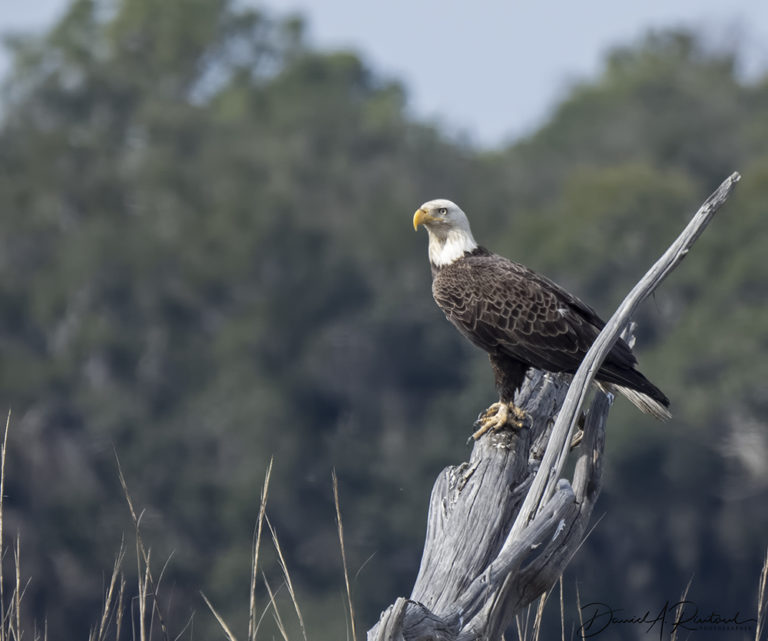
Bald Eagle perched along the waterway, seen from the boat on the way to Little St. Simon’s Island.
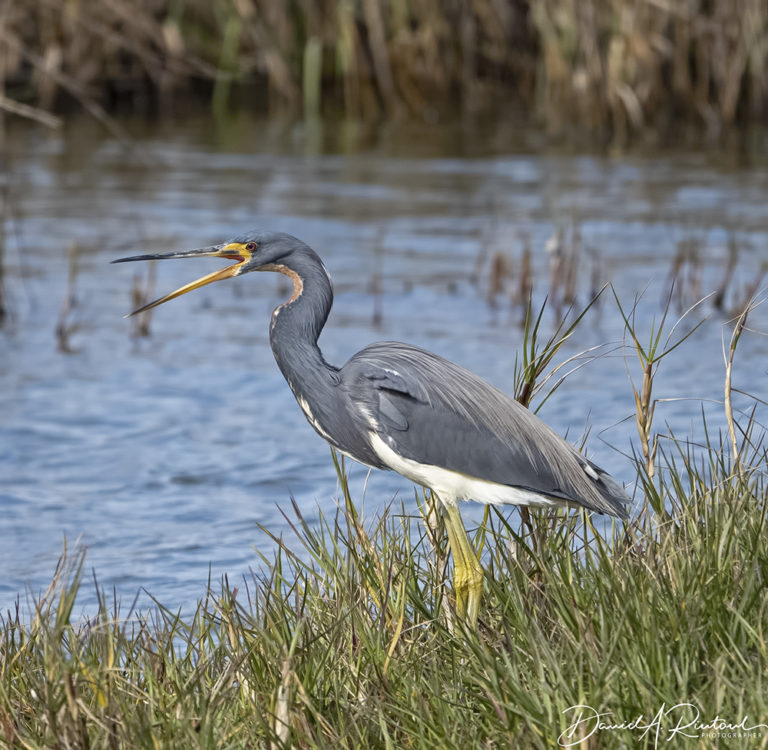
Tricolored Heron, yawning. These were formerly called Louisiana Herons, and may still be called that if you have an older field guide.
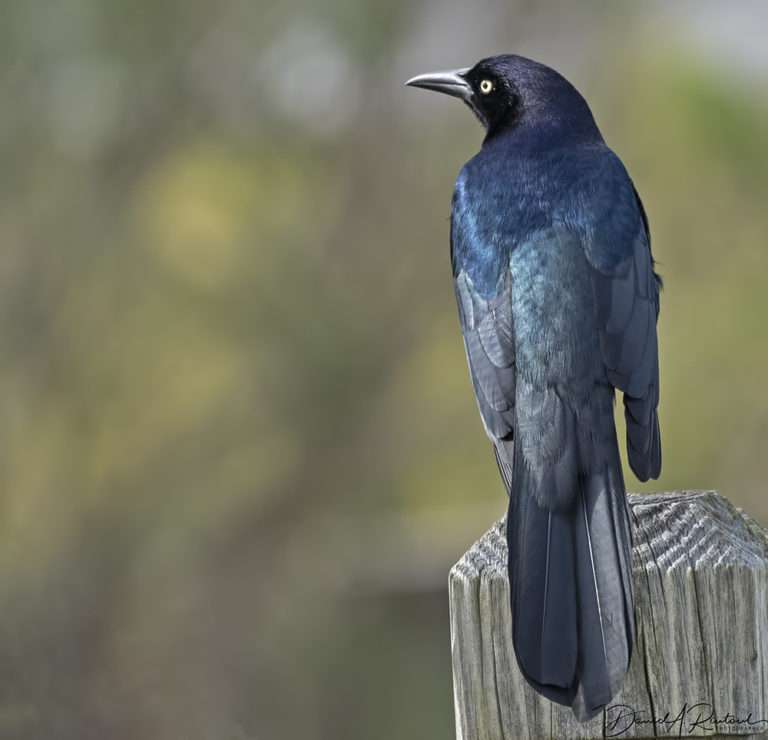
Boat-tailed Grackle. These coastal versions of the inland Great-tailed Grackles were starting to exhibit courtship behavior, and they all looked quite stunning in their spring finery.
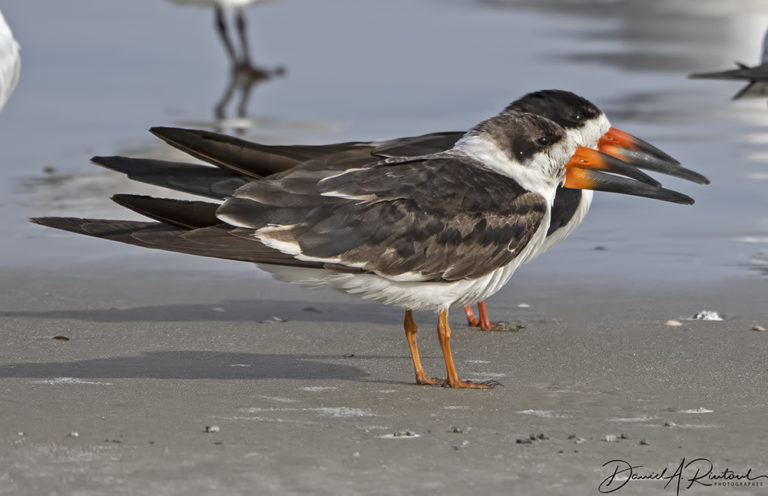
Black Skimmers resting on the beach at low tide. A few of these odd birds winter in the area, but are definitely more common in the summer, so I was happy to find some!

Mary G
Love your photos, Albatrossity!
OzarkHillbilly
That lower bill on the Black Skimmer, I had to look it up. From the Cornell Lab:
Shearwater! Now I know which seabird I have read of so much in so many books!
Thank you, Albatrossity.
eclare
Beautiful photos!
p.a.
Great work. We’re spoiled by your stuff.
JeanneT
@OzarkHillbilly: Thank you for the natural history addition to these great photos.
(and of course I thank Albatrossity for the great visuals. I love getting to see these birds close up!)
Rob
I love that pelican photo, it’s flying while still managing to side-eye the world.
OzarkHillbilly
@JeanneT: One of the best parts of being treated with Albatrossity’s great pics is how they always tickle my curiosity and make me want to go digging.
OzarkHillbilly
Hmmmm… Maybe somebody nailed it’s feet to the perch?
Betty Cracker
Nice photos! I’m not much of a beach person (I can get a sunburn in a bank vault wearing SPF 50 and a lead-lined burka), but I do love to watch the skimmers flying low along the water’s edge. Such specialized, purpose-evolved beaks!
Just One More Canuck
@OzarkHillbilly: ?
JPL
The grackle is ready for a night on the town. Beautiful photos!
Evap
Thanks for the beautiful photos!
cope
What a difference context makes. As a much less accomplished picture taker of birds, I have always admired your technical and compositional images, mostly from west of the MIssissippi if memory serves. However, these are birds of my home state, Florida, and I find that much more inspiring. Red shouldered hawks routinely perch on our back fence, seemingly nonchalant as they scan the ground for tidbits. A pair of bald eagles nests less than half a mile from our home. We live in a sandy pine habitat so gopher tortoises share our space.
Thanks.
Albatrossity
@cope: That’s very interesting! Yes, I do travel more west than east in this country; that’s predominantly because I like open landscapes for birdwatching, and trees seem to get in the way a lot! But Florida, and seacoasts in general, offer open landscapes that I have learned to appreciate.
Familiarity does help us appreciate our local critters, as you note. But I have found that as I travel more, both in the US and elsewhere, I learn a lot about the birds in those places, and then find myself paying more attention if some of those birds show up in social media, news articles, etc. You don’t have to live with them to appreciate birds, but you definitely appreciate them in different ways if they are in your backyard regularly. We now have Red-shouldered Hawks nesting in the woods behind our house (20 years ago this would have been a cause for birders from across the state to want to come visit us and see them!). They are calling regularly, and their youngsters visited the birdbath a couple of times last summer, and I feel like I am getting to know and appreciate them in a new way.
Barbara
I am in awe of your photography. There was a young eagle that perched at the top of a very tall evergreen overlooking the river on which our property sits, and I struggled to get a decent picture even though he appeared to roost there just about every day, no doubt just one of several haunts. Even as a youngster, he was big enough that I was kind of afraid for the smaller of my two dogs. I will definitely be looking for him (or her) again this year. The man on the property down the way from us erected nesting platforms for a variety of birds. Once you put them up around wetlands, you are not allowed to take them down, but I think he really enjoys watching out for the birds.
Mary Ellen Sandahl
Wonderful photos, Albatrossity, thanks so much. I’m a complete amateur at bird-watching (never mind actual birding), but I get a kick out of watching the Cornell Ornithology Lab’s live feeder cam at Sapsucker Woods pond while fixing and eating breakfast. I can compare their action in upper NY State with the equally live action at my own northern NJ feeder just outside the window. Similar species, pretty much — but the Cornell site is close to a woodsy, marshy pond, and there the redwing blackbirds have returned in the last couple of days. Raucous and gorgeous.
Your photography is inspiring!
cope
We moved to Florida from Colorado and at first, the only thing about living here that gave me any pleasure was the birds. Just the other day, I walked out of a Quest lab in a strip mall and standing maybe 15 feet away was a sandhill crane, right there on the sidewalk in the walkway. He gave me a stern side eye look and began squawking. As I drove out of the parking lot, I passed his companions who were congregated by a retention pond along a busy highway. They were all looking in the direction of their still vocalizing friend.
Cool beans.
MelissaM
Lovely! The grackle is gorgeous.
arrieve
Gorgeous pictures as always, Albatrossity. I love to photograph birds, but I am in awe of your skills.
TaMara (HFG)
Great photos. Beautiful birds are a terrific way to start the day.
WaterGirl
That Louisiana Heron looks like it’s giving a stern talking to – to someone or something!
The bottom photo is outstanding! Lined up so perfectly! Are Black Skimmers known for taking stage direction?
chris
Nice warm pictures on this chilly Nova Scotia morning. Thanks, Albatrossity.
stinger
David, your birds-in-flight pictures always knock my socks off, but that shot of the Red-Shouldered Hawk makes me want to reach out and scratch his little head! (Which is not at all my reaction to the Hoatzin, the March entry in your Iconic Birds 2020 calendar. That bird must be related to the porcupine.)
Albatrossity
@stinger: Thanks! I won’t divulge how many birds-in-flight shots I discard for every one I keep :-)
Hoatzins are indeed not cuddly looking. One of my favorite monikers for them, and it really fits, is “dinosaur chicken”… Glad you are enjoying the calendar!
Jay Noble
A few years ago we had some Great Tailed Grackles move into our area of the Nebraska Panhandle. We are at the the extreme edge of their range. I had to Google to ID the blackbird with an extra long tail that swooped over me on our company’s 5k walk/run. Their cousins the Common Grackles are pesky nuisances back around Lincoln with fire hoses being used to shoo them away from downtown trees. These guys aren’t that bad but they are pretty good at holding their ground.
smike
That last picture threw me off at first. I assumed that I could see four beaks, and at a quick glance, four tails. But when I scanned down, what the hell? Only two sets of birdie toes?